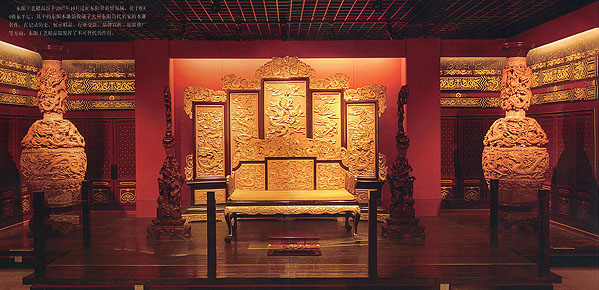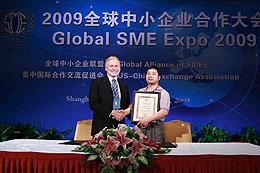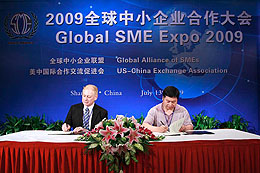Global Industry Cluster Cooperation Centers
Jointly established by Global Alliance of SMEs
and Dongyang Municipal Government
Dongyang Woodcarving is named after what Dongyang produces: one of China's four most well-known woodcarving styles and one of the most wonderful folk crafts of the Chinese people.
Dongyang Woodcarving has a long history. Originating from the carving of Lu Ban, a master craftsman of the Spring and Autumn Period in China, it grew during the Qin and Han Dynasties, developed during the Tang Dynasty, matured during the period from the Song to Ming Dynasties, and reached its peak during the Qing Dynasty. During the Republic of China era (1912-1949), it no longer produced carvings only in individual households, but started large-scale production in factories in Hong Kong and Singapore, and began selling its products overseas. Since the foundation of the People's Republic of China (1949), and especially after China's opening and reform, Dongyang Woodcarving can be found in many high-profile localities, such as the Imperial Palace, the Great Hall of the People and Diaoyutai Stage Guesthouse. It is now in over 80 countries and regions worldwide, including America, France, Germany and Singapore, as one of China's unique crafts.

Dongyang Woodcarving is known for its carefully selected materials, great variety, and seamless combination of artistry and practicality. Having a strong capacity for rich content, extraordinary concepts, delicate design and exquisite technique, it has gained a good reputation in both Chinese and foreign markets. Dongyang currently owns 2733 woodcarving companies, 58 of which are large-scale enterprises. In 2008, the total output value of the woodcarving industry reached RMB 14.52 billion. In the Asia-Pacific region, Dongyang Woodcarving now employs a folk crafts master, six national industrial art masters, 25 provincial industrial art masters, ten (Zhejiang) provincial folk artists, and three national and five provincial guardians of intangible cultural heritage. By the end of 2008, Dengyang Woodcarving works had won a total of 606 prizes in various exhibitions, 222 of them being special awards and gold prizes.
 |
 |
Dongyang Woodcarving caters to a prosperous world. In 1995, Dengyang city was named the "Hometown of China's Folk Arts". In 2000, Dongyang Woodcarving was listed as the first key traditional industrial artworks under national protection. In 2002, the city was named the "Hometown of China Woodcarving" by the China Federation of Light Industry. In 2006, Dongyang Woodcarving was recognized as being representative of China's intangible cultural heritage. In 2009, the Dongyang Municipal Government cooperated with the Global Alliance of SMEs (Small and Medium-sized Enterprises) to establish a global woodcarving industry cooperation base. With plans to carry out a series of practical collaborations to shape the Dongyang woodcarving industry cluster into a modern competitive model, this will lead the development of the global woodcarving industry.